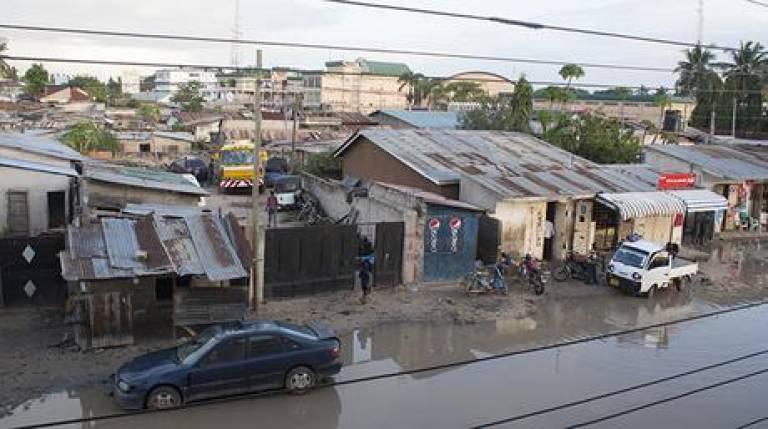Gender, climate change and urbanisation: Revisiting the links
7 April 2016
There is a growing body of work exploring the relationship between gender and climate change, gender and urbanisation, and the links between urbanisation and climate change.

What is less well understood is the intersection of the three elements, i.e. the gendered nature of climate change in urban areas. The emerging findings of the DPUs’ research suggest that there are, in fact, significant patterns in this set of relationships.
Firstly, pathways of urbanisation that generate gender inequality are also damaging for the environment. One example pertains to transport systems associated with the modernist city, which focus on road construction and private car use predicated on a daily commute to work. Such systems, and the forms of urbanisation associated with it, fail to serve the needs of the majority of low income and women residents who have less access to private cars, and more complex transport patterns, balancing work commuting with caring roles. At the same time, these dominant approaches to transport contribute to climate change by promoting extensive urban forms and fossil fuel intensive forms of transport.
Secondly, technical and market-based fixes to climate change in urban areas (associated with the promotion of smart cities, environmental technologies, and market- based solutions to basic urban infrastructure) tend to address the needs and wants of those privileged by the status quo - and its gender bias specifically. This means that the costs of dealing with climate change in cities are likely to be more heavily borne by subaltern citizens, including women.
Finally, despite the above patterns of inequality, it is striking that the voices most absent from the debates on (and the governance of) urban development and climate change, remain those of low-income women, often living or working under conditions of informality.
The articulation of these three dimensions demands urgent reframing from a justice perspective, a perspective that reveals the links, not just in terms of unequal patterns of distribution of burdens and benefits experienced by a sizeable (but often invisible) portion of women and men living in cities;, but a perspective that also reveals why urban climate justice will not be achieved without their recognition and ‘parity of participation’.
 Close
Close

